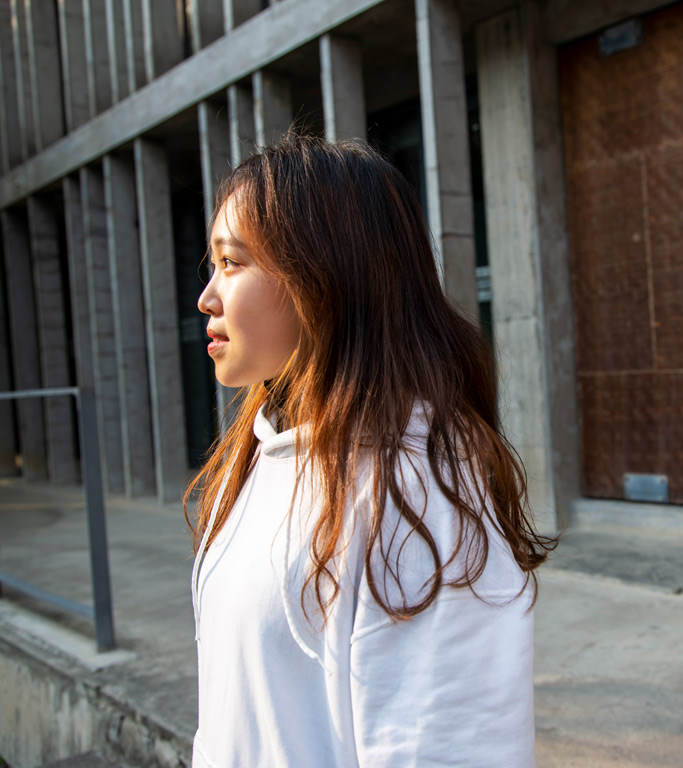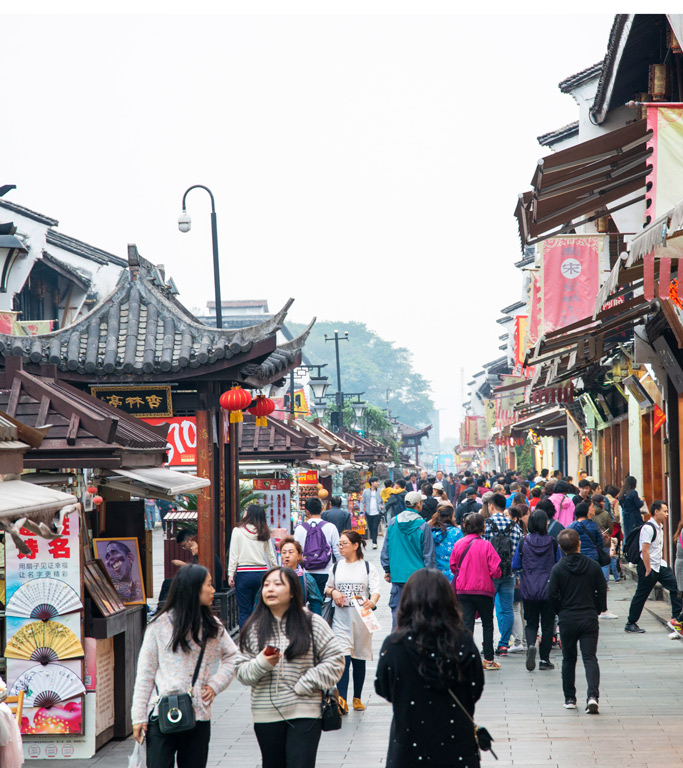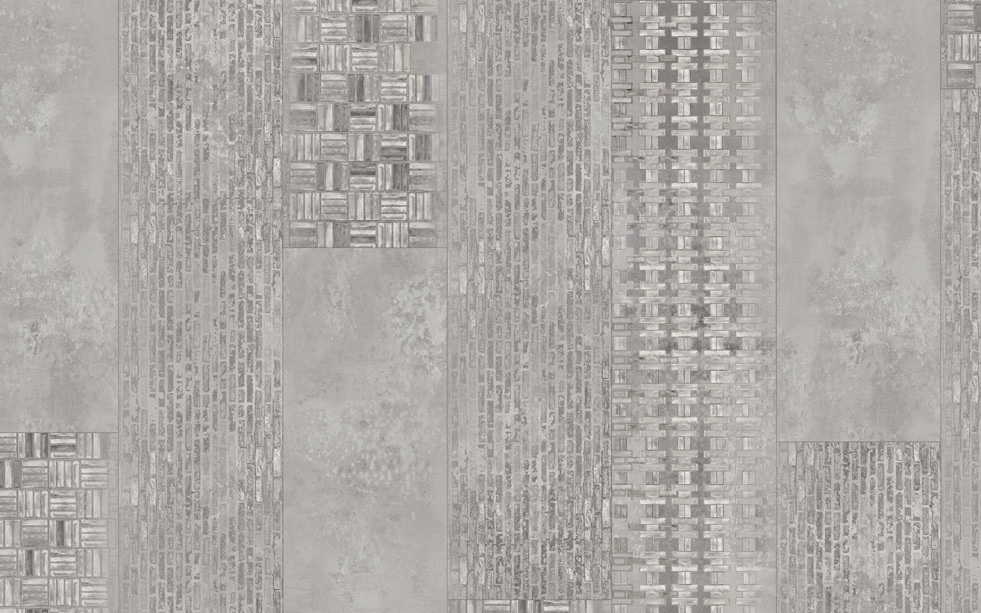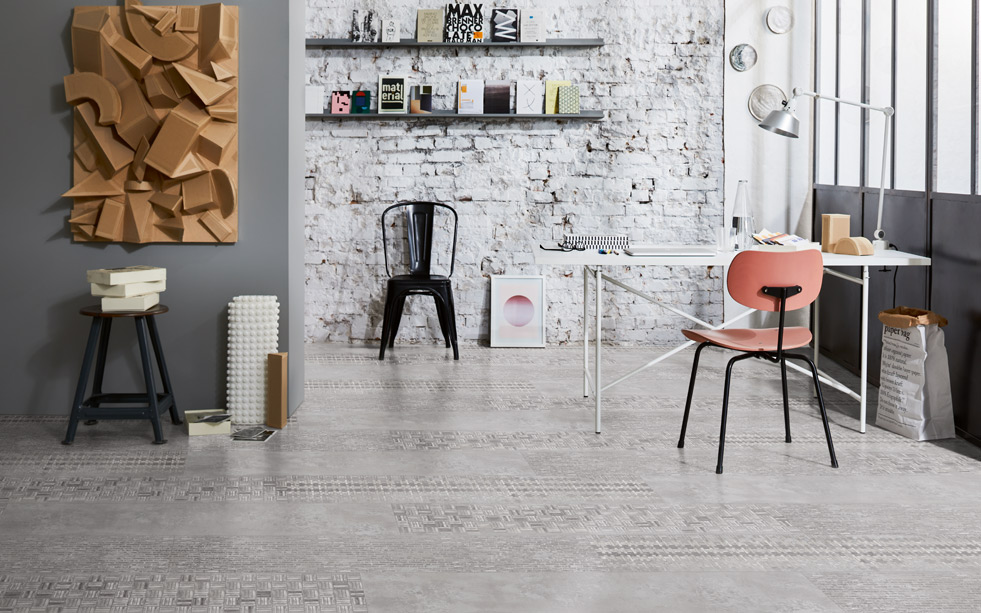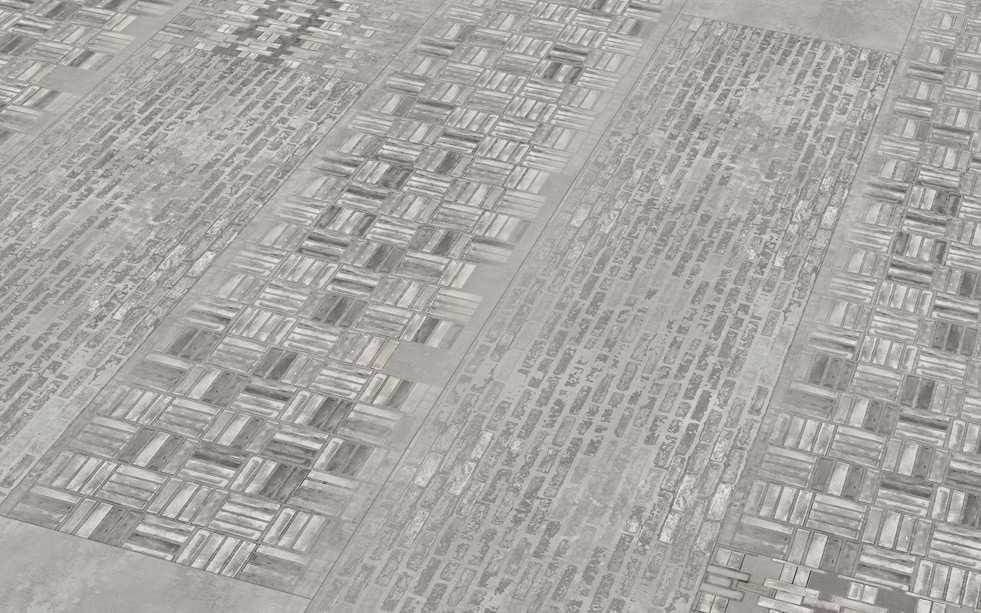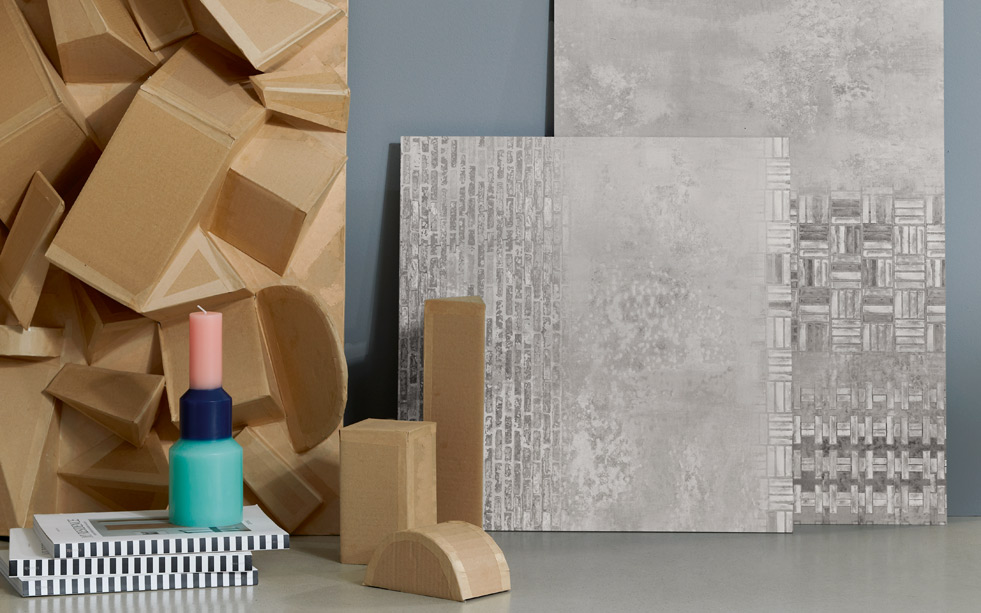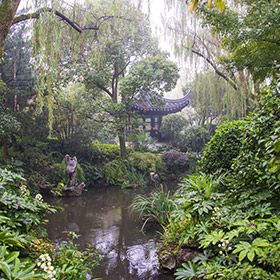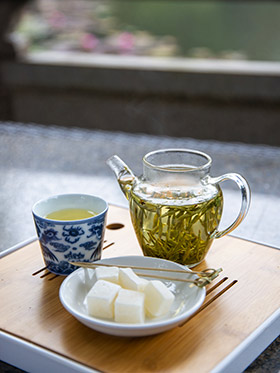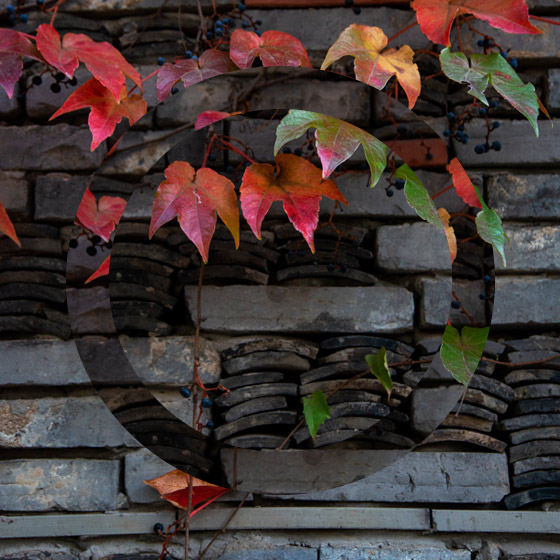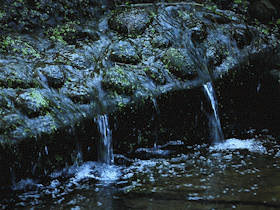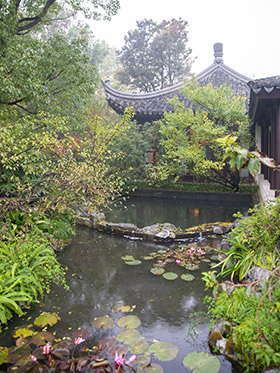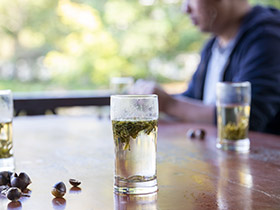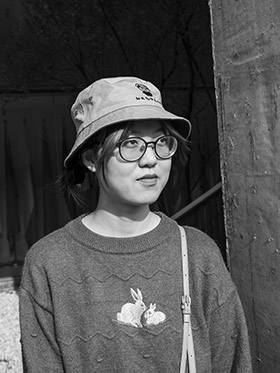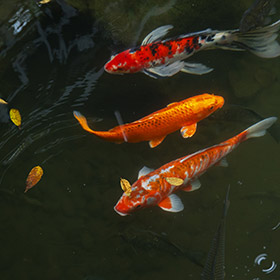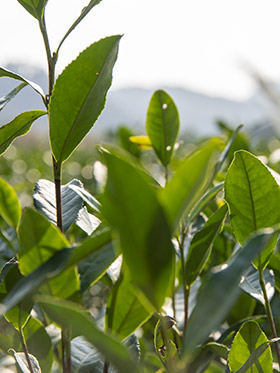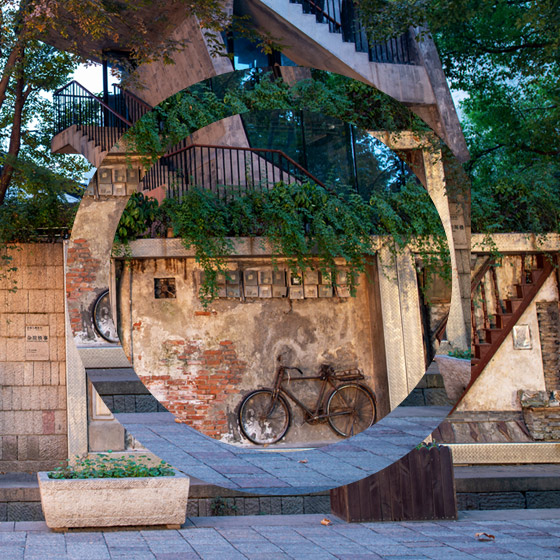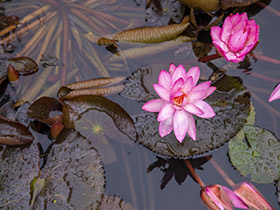Preheated porcelain, hand-picked and roasted tea leaves, water heated to 85 degrees and poured over the leaves from shoulder height, infusion sieved clockwise – for the famous Longjing green or dragon well tea to achieve its full, soft taste, the tea masters in the teahouses of Hangzhou follow a strict sequence.
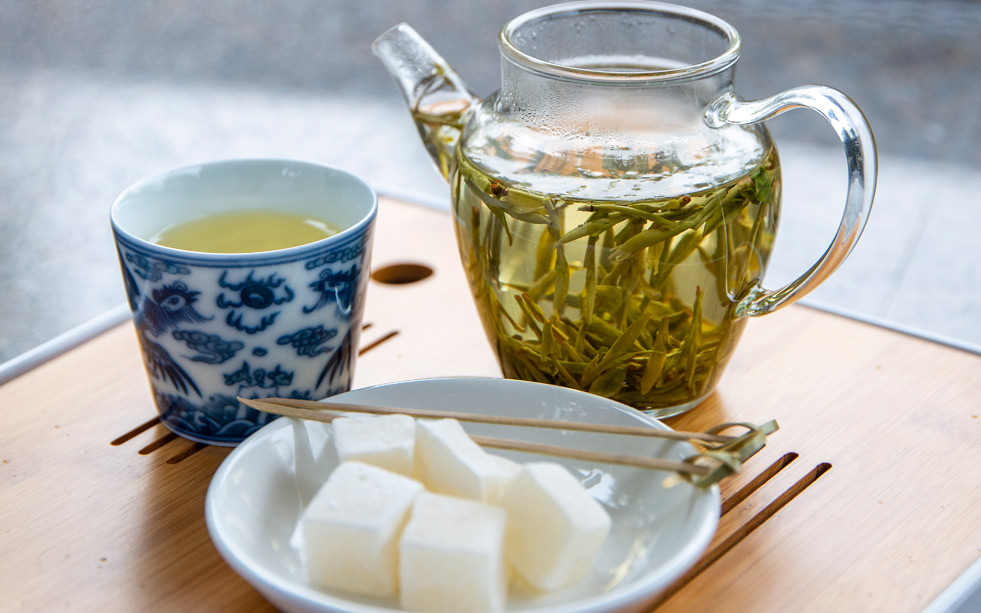
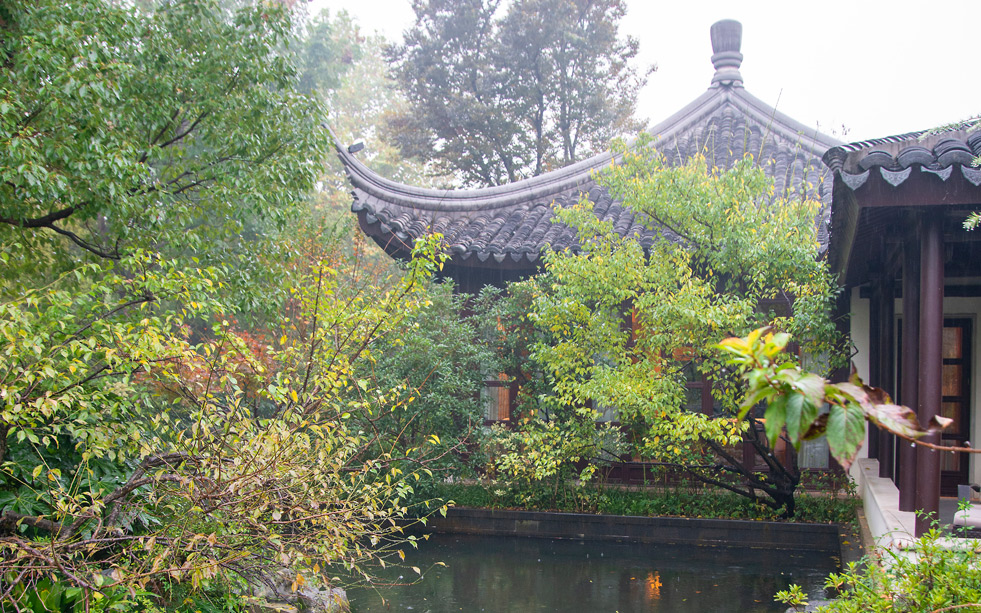
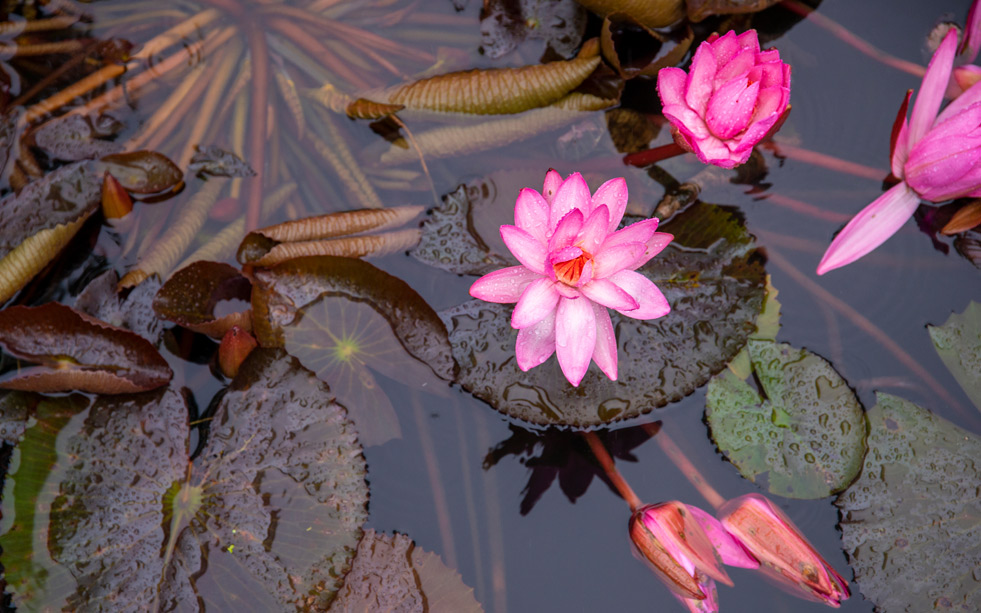
Only a few minutes by car away from the hustle and bustle of the metropolis of Hangzhou with a population of 10 million, a green oasis nestles on the hillside: the tea fields of Longjing, which experts regard as the Mecca of green tea. As far as the eye can see the tea bushes stretch out towards the horizon, interrupted here and there by gently winding paths. There is no trace of the noise and crowds of the nearby city. In the middle of the tea fields there is an almost meditative silence.
Drinking tea in China is not only for quenching one's thirst. It is a ceremony that reveals the fundamentals of Chinese culture. The planting and processing and drinking of tea has a long history. No wonder that China is considered the birthplace of tea. The original idea came from the legendary Emperor Shennong, who, it is said, lived 5000 years ago. At that time tea was used for medicinal purposes. Only much later in the Tang Dynasty from 618 – 907 did the custom of drinking tea spread among the people. During the Song Dynasty from 960 – 1279, tea culture changed considerably and became more and more ritualised.
